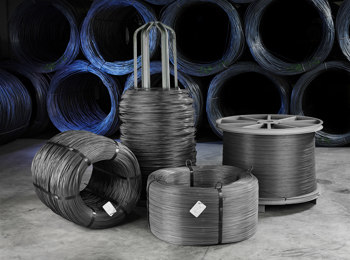Dàmh . 04, 2024 06:37 Back to list
gabion cage sizes
Understanding Gabion Cage Sizes A Comprehensive Guide
Gabion cages have become an increasingly popular choice in landscaping and construction due to their versatility, strength, and aesthetic appeal. These wire mesh cages, typically filled with stones, rocks, or other materials, serve various purposes such as erosion control, slope stabilization, and decorative elements. One of the essential factors to consider when utilizing gabions is their sizes, as this directly impacts their functionality and suitability for different projects.
1. Standard Gabion Cage Sizes
Gabion cages come in a variety of standard sizes to cater to different applications. The most common dimensions for rectangular gabions are 1m x 1m x 1m, 2m x 1m x 1m, and 3m x 1m x 1m. These sizes provide flexibility for various landscaping and building requirements. Typically, the height of the gabion cage can vary from 0.5m to 1m, and the width can span from 0.5m to 2m. The choice of size will depend on the intended use, whether it is for a retaining wall, a decorative feature, or a larger structural application.
While standard sizes are readily available, many manufacturers offer customized gabion solutions. This customization can benefit projects with specific design requirements or unique spatial constraints. For instance, if a garden design necessitates a specific height to complement the surrounding landscape, custom gabion sizes can be fabricated to ensure a perfect fit. This adaptability allows architects and landscapers to be more creative and innovative with their designs.
gabion cage sizes

3. Choosing the Right Size for Your Project
Selecting the appropriate gabion size is critical for achieving the desired results. For erosion control, larger gabions may be more effective, as they can withstand higher water flow and provide better structural integrity. Conversely, for a decorative application, smaller cages filled with aesthetically pleasing stones may be more suitable. Additionally, the intended weight distribution must be considered; heavier materials may require shorter, more robust cages to prevent collapse.
4. Installation and Transportation Considerations
The size of gabion cages also influences installation and transportation logistics. Larger cages are bulkier and may require specialized machinery for placement, while smaller cages can be easily moved and installed by hand. It is essential to consider access to the installation site and the surrounding environment when selecting gabion sizes.
5. Conclusion
Gabion cages are functional, durable, and visually appealing components in construction and landscaping. Understanding the various sizes available is crucial for selecting the right type for your project. Whether you opt for standard dimensions or customize them to suit your needs, the proper gabion size will play a significant role in the success of your project. Not only do they provide structural benefits, but they also enhance the beauty of outdoor spaces while effectively managing environmental concerns. As gabion technology continues to evolve, staying informed about the latest sizes and options can help you make the best choice for your specific applications.
-
The Role of Galvanized Gabion Mesh in Riverbank Protection
NewsJun.26,2025
-
The Role of Gabion Basket Raised Bed in Sustainable Gardening
NewsJun.26,2025
-
Quality Assurance of Wire Mesh Gabion Baskets
NewsJun.26,2025
-
Installation Guide for Welded Gabion Box
NewsJun.26,2025
-
How to Choose the Right Gabion Box
NewsJun.26,2025
-
Different Types of Gabion Wire Mesh
NewsJun.26,2025
-
Why PVC Coated Gabion Mattress Is the Best Solution for Long-Term Erosion Control
NewsMay.23,2025






